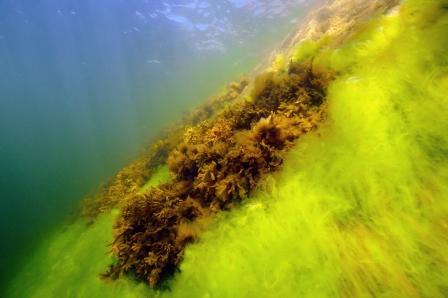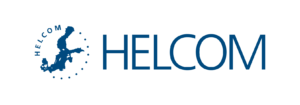CORESET I
Development of HELCOM Core Set indicators (HELCOM CORESET I) (2010-2013)

Objectives
WP1. To make the holistic assessment of the Baltic Sea ecosystem health status available on the HELCOM web site with links to the technical background reports and supporting information.
WP2. To develop a set of HELCOM core indicators for biodiversity with quantitative targets to allow an assessment of the status of the Baltic Sea in relation to the ecological objectives for biodiversity.
WP3. To develop a set of HELCOM core indicators for hazardous substances (CSIHS) with quantitative targets to allow an assessment of the status of the Baltic Sea in relation to the ecological objectives for hazardous substances.
The HELCOM CORESET (2010-2013) develops a set of core indicators for following up the effectiveness of the implementation of the Baltic Sea Action Plan. The core indicators will also support the EU Member States in the Baltic Sea region in implementing the EU Marine Strategy Framework Directive. The work will particularly focus on core indicators in relation to biodiversity and hazardous substances in the Baltic Sea, the latter of which has been named as an EU flagship project. HELCOM core indicators for eutrophication have been further developed within the CORE EUTRO process. Interim reports will soon be available on the HELCOM website.
What are HELCOM core indicators?
Core indicators will differ from more descriptive HELCOM Indicator Fact Sheets in that they will have targets or boundaries for good environmental status that will enable classification of the environmental status into different status quality classes. HELCOM’s main principles for the development of core indicators are that they will describe the status or pressures on the scale of the entire sea area, they have a scientific basis and that they reflect anthropogenic pressures and thus enable improvement of status by management measures on land or at sea. The HELCOM common principles for core indicators are presented in the interim report of the project.
Hazardous substances core indicators
The CORESET expert group on hazardous substances has proposed 13 core indicators for concentrations of hazardous substances and their biological effects. Some of the core indicators consist of several substances or congeners. The core indicators were selected on the basis of their policy relevance, adverse effects to the environment (PBT properties), cost-efficient analyses and available targets. The expert group used existing targets from the EU Priority Substance Directive and OSPAR Commission and they are all are based on ecotoxicological studies. Eight of the proposed core indicators measure the HELCOM BSAP ecological objectives referring to the concentrations of hazardous substances, one measures the radioactivity and four measure the biological effects of the substances. Monitoring of them is largely in place, but gaps are found for almost all organic substances and the two widely used pharmaceuticals, diclophenac and 17-alpha-ethinylestradiol, have very limited data available in the Baltic Sea. The four core indicators for biological effects cover responses at the enzymatic, cellular and organism level and bridge the contamination status to the state of the biodiversity.
Biodiversity core indicators
The CORESET expert group on biodiversity indicators has divided its work to marine mammals, waterbirds, fish, non-indigenous species and benthic and pelagic habitats and associated communities. The biodiversity core indicators are being developed to address various anthropogenic pressures to the biodiversity status and to include those functional groups which are in key position to indicate the state of the biodiversity and food webs of the Baltic Sea. Monitoring of the proposed core indicators for biodiversity is patchy and therefore one of the main tasks of the biodiversity expert group is to describe what monitoring would be needed for the proposed core indicators.
Activities
The major part of the project will be devoted to the development of core indicators for hazardous substances and biodiversity. The work on further development of eutrophication core indicators and targets should time-wise run parallel with this project.
The project will submit the first set of core indicators to the 17th meeting of HELCOM MONAS in September 2012 and, if approved, this set will be the basis of the web-based follow-up system of the implementation of the Baltic Sea Action Plan to be presented to the HELCOM 2013 Ministerial Meeting. However, it has become evident that in the upcoming years, many essential core indicators will require more work, for instance to achieve a thorough understanding of the interdependencies of core indicators in the Baltic environment.
The project will also work on transforming the HELCOM holistic assessment of ecosystem health of the Baltic Sea into an interactive internet version on the HELCOM web pages which links the assessment report to all available supplementary and supporting background information, such as the results of the updated HEAT, BEAT and CHASE assessments and technical background information on the Baltic Sea Pressure Index and integrative status assessment tool. The internet version should enable tracking of the assessment results to the level of individual indicators and as far as possible even to data.
Project structure
The
CORESET project is being carried out under the Joint Advisory Board for
HELCOM CORESET and TARGREV Projects (HELCOM JAB) which will convene to
steer the overall work defined in WP2 and WP3 and acts also as the
regional coordination platform for the implementation of the EU Marine
Strategy Framework Directive.
The work on the indicators has been
divided to two expert groups which hold workshops and meet in smaller
teams, if necessary. The expert groups report to HELCOM JAB and HELCOM
MONAS.
Expected results
1. Regularly updated HELCOM core indicators with targets for biodiversity and hazardous substances, along with those created for eutrophication, finalised and displayed on the HELCOM web page.
2. HELCOM holistic assessment of ecosystem health of the Baltic Sea will be made into an in
Contact

Project Manager
Ms. Lena Avellan
Phone: +358 40 162 2054
Email: lena.avellan@helcom.fi

